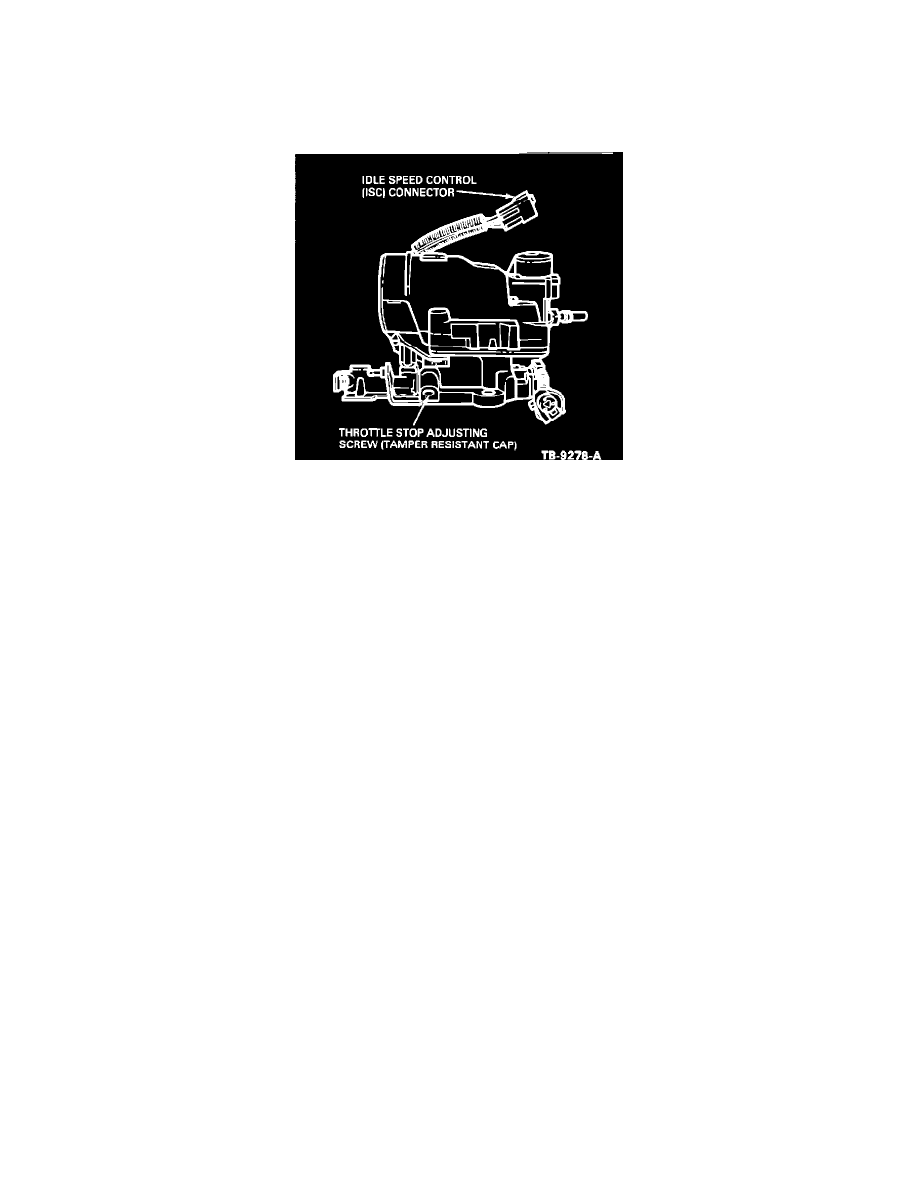Tempo L4-140 2.3L CFI (1985)

NOTE:
If plunger does not retract, refer to EEC IV diagnostics.
^
Return the ignition key to the "Off" position; wait 10 to 15 seconds.
^
Remove the jumper wire.
Figure 7
^
Disconnect the ISC motor from the wire harness, Figure 7.
Perform Throttle Hard Stop Adjustment:
^
Remove throttle body from vehicle.
^
Remove the Welch plug which covers the throttle stop adjusting screw, Figure 7.
^
Remove and replace screw if loose.
^
Reinstall throttle body on vehicle, check electrical connectors, start engine, let engine stabilize, and set the idle RPM, ^ Reconnect the ISC
motor to wire harness, Figure 7.
4.
With engine idling, observe ISC extending to curb idle position. Check the area between the throttle lever and tip of the ISC motor. If no
contact is apparent between these two surfaces, binding may exist at the throttle body. With engine Off, open throttle to Wide Open Throttle
(WOT). Upon release, throttle should return to the closed position. If contact is apparent between the ITS and the throttle lever, it is possible
that binding at the throttle body may be just enough to keep the ITS from operating. Determine source of binding (bent shaft, shaft seal
swelling, or cruise control) and replace or repair as necessary.
5.
If condition is still present, replace the EEC IV processor. Refer to the specification charts on pages 18 and 19 of this TSB. Start engine and
run for at least 3 seconds and turn ignition key to the Off position. Inspect ISC motor retracting and repositioning to make sure of proper
operation.
CAUTION: If for any reason the battery is disconnected or the vehicle has to be jump started, this procedure may need to be performed.
a.
Set parking brake and block wheels. If equipped with automatic brake release, disconnect the vacuum hose and plug it. Make all
checks/adjustments with engine at normal operating temperature and accessories Off. Only the TACH is needed for the following procedure.
Before proceeding, check for vacuum leaks.
b.
After transmission is engaged in Drive for ATX or Neutral for MTX, and the engine has idled for 120 seconds, idle RPM should be within
specification.
c.
Lightly step on and off the accelerator. The engine RPM should return to the specification stated in the charts on pages 18 and 19 of this
TSB. If the RPM remains high, repeat the sequence. It may take the system an additional 120 seconds to "learn".
NOTE:
"Learned" and fast idle speeds are controlled by the EEC IV processor and the idle speed control motor. If the control system is operating
properly, these speeds are fixed by the processor and cannot be changed by traditional adjustment techniques (for example, hard stop screw).
